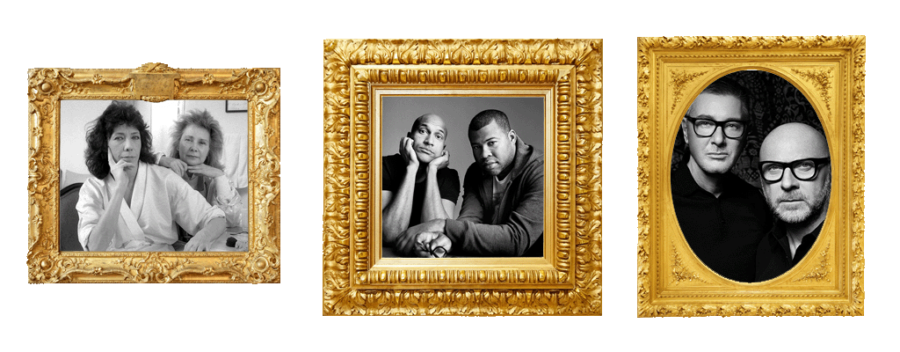Let’s talk about chemistry. It’s the secret ingredient that transforms a group of individuals into a highly effective team. We recognize that amazing chemistry has led to the creation of great works of art or to underdog sports teams winning championships, but it’s not exclusive to the creative or athletic fields. If you’ve been wondering how to get your teams on the same page faster when getting projects off the ground, it might be time to examine how you can foster better chemistry in an agency environment.
There are many areas where team chemistry can improve efficiency and quality of work: between independent team members, between creative lead and the product itself, between the account person and the client, to name a few. Being aware of those opportunities and building teams around chemistry is not only good for the project, but good for the team as a whole. This makes the process fun, reduces runway time initializing projects, and cuts down on revisions – all of which keep a project on budget and produce high-caliber work.
 team chemistry in any industry
team chemistry in any industry
When we talk about chemistry, it tends to be in tangibles – the chemistry between actors that elevates a performance or the pairs who produce masterpieces of art, architecture, or fashion. What gets left out is that the impacts of team chemistry go far beyond creative output. Behind the scenes, productivity, company loyalty, innovation, and even reputation are boosted when you foster good team chemistry. That’s because when you have a team who works well together, they can compensate for individual gaps in skill or experience and creative burnout.
Moreover, this collaborative environment results in a dynamic where team members are focused on building on each other’s work to create a greater whole, rather than working in tandem or in competition with each other. This unified vision allows a team to create work that transcends any one individual. While as a culture, we still tend to valorize the myth of the lone genius, there are plenty of famous examples of team chemistry like Lily Tomlin and Jane Wagner, Key and Peele, or the eponymous Dolce and Gabbana.

dispelling the myth of the lone genius
There is something very appealing about stories of visionaries or innovators. We love the idea of one person standing a cut above the rest with the vision and drive to create a complete game changer, but these kinds of narratives don’t often reflect reality. For every Zuckerberg, Beyoncé, or Eddison, there are hundreds if not thousands of people collaborating behind the scenes to accomplish a shared goal. In terms of human achievement, it wasn’t one man who took us to the moon. It took teams of people with the chemistry to work well together combining their skills to achieve what had previously thought to be impossible.
industries that succeed through chemistry and collaboration
Seeing as humans are a social species, it makes sense that many feel they do their best work when part of a team, part of something larger than themselves. When we scale that up, we have entire industries that rely on large teams collaborating to achieve a singular goal or objective. In fact, some of the most high-profile industries are heavily reliant on collaborative work models.
Silicon Valley
The tech industry may be one of the biggest proponents of the lone-genius archetype, but that doesn’t accurately reflect how many of these companies operate. Technology has become too complex to be designed by a handful of individuals. That’s why many companies have now adopted the Agile method of software development, which facilitates collaboration and cooperation as the main pillars of project development.
the video game industry
The video game industry used to be shaped by intense rivalries: Nintendo vs. Sega, Sony vs. Microsoft, PC vs. consoles. In more recent years, that’s been changing with giants like Sony and Microsoft entering into partnerships. And with the industry as a whole being valuated at upwards of $220 billion USD, this seems to be a winning strategy.
Hollywood
We may know the names and faces of famous actors and directors, but their fame is only possible because of the teamwork of dozens behind the scenes. In particular, animation studios like Disney and Pixar have built their cultural cache by leveraging team chemistry to produce some of the most innovative animated motion pictures.

do you need social chemistry to have good team chemistry?
Social chemistry can be understood as the spark or catalyst to forming close relationships. People who get along well can often work together very well. Does that mean that for your team to have good chemistry they must become close friends? Not at all. There are a lot of other factors that influence chemistry, like having a shared vision, or different but compatible skill sets. There are plenty of examples of people who didn’t get along personally having create creative chemistry. Take Simon and Garfunkel or Larry Page and Sergey Brin, for example.
We don’t hire employees solely based on personality, which is why people with wildly different opinions and perspectives end up working together. That doesn’t mean your teams won’t have good chemistry. Having common purpose goes a long way in bringing teams together – as long as everyone has equal opportunity to contribute.
At anderson pigeon, our aim is to provide your company with the tools and building blocks to facilitate brand building and collaboration internally. We work with internal stakeholders to foster the creative momentum that is the hallmark of productive collaboration. Chemistry amplifies the talents of our team. It’s the metaphorical turning the dial to eleven. A team with good chemistry is more motivated to show up and put their all into a project. And the end result is work that surpasses what each individual is capable of achieving on their own.
